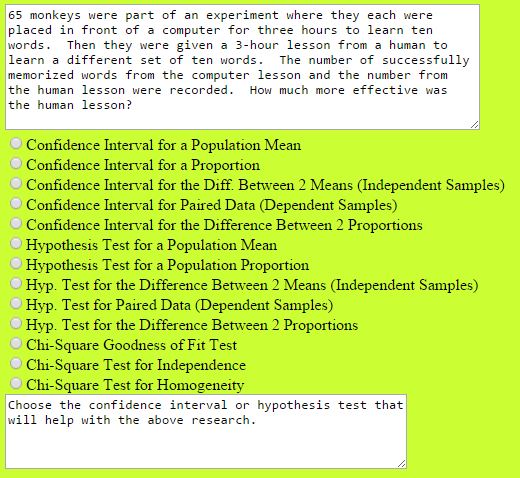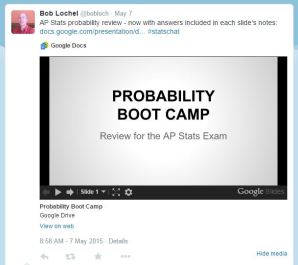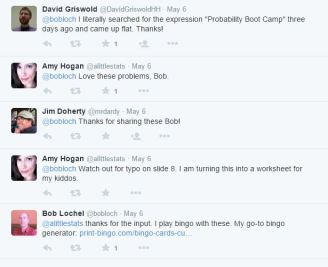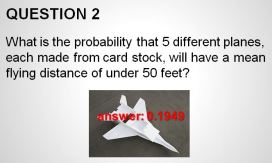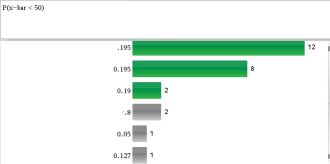Blog Archives
Day 49: Simulation A La Frappy
I continue to believe that one of the most powerful teaching strategies I employ with my AP Statistics class is the FRAPPY. Students work on a released AP question related to the topic we’re studying. After they have the allotted time (12-15 minutes to quietly write out their response), they talk with their group and adjust their answer using a green pen. Then they look at student responses together and assess the quality of the responses; if there is anything in the response my students want to add to their own response they can again add it using green pen. Finally they use the rubric to assess their final answer.

And one of the most compelling aspects is the student reflection I added to the process. Although it was discussed as a good practice I felt I needed to be very purposeful with my students about the reflection. For this Frappy, the students did the 2001 Problem 3: Radio Givaway:
Every Monday a local radio station gives coupons away to 50 people who correctly answer a question about a news fact from the previous day’s newspaper. The coupons given away are numbered from 1 to 50, with the first person receiving coupon 1, the second person receiving coupon 2, and so on, until all 50 coupons are given away. On the following Saturday, the radio station randomly draws a number from 1 to 50 and awards cash prizes to the holders of the coupons with these numbers. Numbers continue to be drawn without replacement until the total amount awarded first equals or exceeds $300. If selected, coupons 1 through 5 each have a cash value of $200, coupon 6 through 20 each have a cash value of $100, and coupons 21 through 50 each have a cash value of $50. (a) Explain how you would conduct a simulation using the random number table provided below to estimate the distribution of the number of prize winners each week.
Part (b) to perform the simulation 3 times is usually straightforward for the kids. So the big focus is on explaining how to run the simulation. Here are some examples of my students’ reflections on their performance and lessons learned:
“I understood the concept…I should think about the entire process when writing the response” This student identified the part of the process that was missing in the final response.
“I need to remember the smaller details that tend to fit into every type of this problem” I just love the generalization the student is trying to make here!! And the student provides specific ways to do this.
“I did not specify to count the # of winners, which is the point of the question, even though I did it….Next time, I will …actually address the question.” This student recognizing the importance of clearly writing each step and reading the directions.
If I were to describe these errors and caution students against them, it would fall on deaf ears. How beautiful and powerful for students to self-critique!!
Day 156: Probability Boot Camp
Every year it seems my students need additional practice with probability. I was Twitter-lurking again this week and came across Bob Lochel‘s response to a post asking about how people are prepping their kids. Just as David Griswold shared, I had searched for this gem and never did find it. Thanks Bob for sharing!
The questions in this review are thoughtfully put together, mixing in different key concepts and processes for probability. As a class, we talked through the first question together. Then I had the students work on the second question, and did a Navigator quickpoll with the intent to talk about the different answers. I was pleasantly surprised with how many answered correctly (although they didn’t follow directions for sig-figs). But we also were able to analyze the errors: gave the z-score, didn’t subtract from 1…and we followed that up with what might have happened).
As we continued, their success rate improved as is evidenced in this quickpoll results.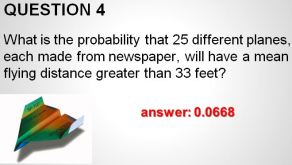
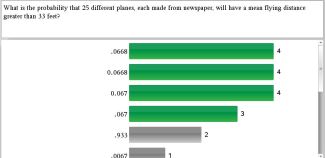
I particularly like these two questions as they ask students to put together multiple ideas and solve the problem using a multi-step process…so AP-like!
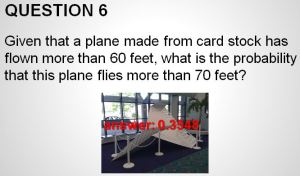
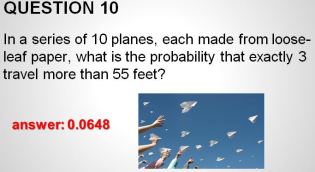
I really do like to use the quickpoll function of the Navigator to encourage mistake-analysis and engagement. What do you do to help students analyze mistakes?
Day 154: Choosing the Right Procedure
One of the main staples of an AP Statistics class is prepping for the AP Exam, and one of the most challenging things for students is choosing the right inference procedure for a situation. So Larry Green’s Categorizing Stats Problems Applet has been used extensively. This link plays well with iPads, too!
Every year, my students comment very positively about their experiences with the applet.
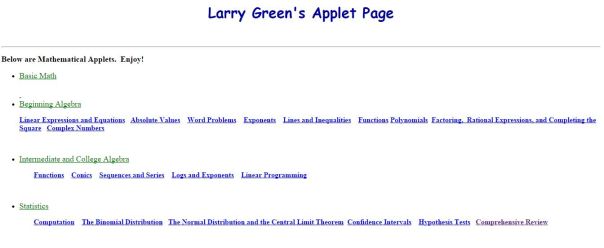
Here is an example of the type of problem and the choices students can make. When they choose correctly, they get a smiley face. If they choose incorrectly, they get hints to help them narrow their next choice. I advise my kiddos that initially they will be humbled, but as they continue through the problems, they will get better. And the nice thing is, they do!
